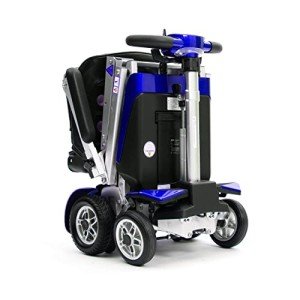Understanding Mobility Scooters: A Comprehensive Guide
Mobility scooters have actually become a necessary tool for people who deal with mobility obstacles, supplying independence and a method of transportation. They are designed to help users in navigating numerous terrains, whether indoors or outdoors, enabling them to engage more fully in daily activities. This short article will check out the types of mobility scooters, their functions, advantages, and factors to consider for possible users.
What is a Mobility Scooter?
A mobility scooter is a motorized lorry made for people with physical restrictions. It helps users keep their mobility and independence, providing a reliable ways of transport over short ranges. While they may look comparable to small electric automobiles, mobility scooters are normally powered by batteries, with controls developed for ease of usage.
Kinds Of Mobility Scooters
There are numerous types of mobility scooters available in the market, each developed to accommodate different needs and preferences. Here's a breakdown of the most typical types:
| Type of Mobility Scooter | Description | Best For |
|---|---|---|
| Three-Wheeled Scooters | These scooters use exceptional maneuverability and small turning radius but may lack stability. | Indoor usage and tight spaces. |
| Four-Wheeled Scooters | Frequently more stable than three-wheeled models, these scooters are best for outdoor usage. | All-terrain travel and outside activities. |
| Portable Scooters | Lightweight and collapsible, these scooters are designed for easy transport. | Travelers and people with limited storage space. |
| Heavy-Duty Scooters | Developed for bigger users, these are robust and can manage heavier weights, often geared up with much better battery life. | Users needing extra support and stability. |
| Feature-Rich Scooters | These might consist of innovative technology such as Bluetooth connectivity, built-in GPS, and adjustable seating. | Tech-savvy users trying to find comfort and convenience. |
Key Features of Mobility Scooters
When selecting a mobility scooter, purchasers need to think about numerous vital features. The following list details critical aspects that can greatly affect their experience:
- Weight Capacity: Understanding the scooter's weight limit is vital to make sure safety and performance.
- Battery Life: A longer battery life translates to more prolonged use between charges, which is crucial for lengthy journeys.
- Speed: Typical mobility scooters can reach speeds in between 4 to 8 miles per hour, but it's necessary to pick one that fits the user's needs.
- Convenience: Look for adjustable seats, armrests, and back-rests that improve the overall riding experience.
- Mobility: If taking a trip frequently, a lightweight and foldable scooter is advantageous.
- Surface Capability: Some scooters are better geared up for rough surfaces, while others work best on smooth surface areas.
Advantages of Using Mobility Scooters
Mobility scooters use several advantages that can substantially improve users' quality of life. These include:
Increased Independence
Numerous people who fight with mobility depend on family or caretakers for transport. Mobility scooters empower users to move about easily and carry out errands on their own, cultivating a sense of independence and self-sufficiency.
Enhanced Quality of Life
Having the capability to travel unassisted can result in social engagement, enhanced mental wellness, and overall much better quality of life. Users can get involved in social activities, see loved ones, and explore their neighborhoods.
Cost-Effectiveness
Compared to other mobility help or services, mobility scooters can be more cost-efficient. They can get rid of the need for expensive adjustments to homes or dependence on transport services.
Adjustability and Customization
Lots of mobility scooters feature choices for modification, ensuring that users can tailor them to best satisfy their specific requirements.
Factors to consider Before Purchase
Before selecting the best mobility scooter, possible buyers need to keep these factors to consider in mind:
- Lifestyle Needs: Assess how the scooter will suit day-to-day routines, including the frequency and places of usage.
- Trial Rides: If possible, taking a couple of designs for a test drive can help determine convenience and maneuverability.
- Budget plan: Costs can differ commonly, so defining a budget plan upfront is vital.
- Service warranty and Service: Always consider the guarantee provided and the accessibility of client service in case of repair work.
Frequently Asked Questions About Mobility Scooters
1. How quickly do mobility scooters go?
Mobility scooters normally range from 4 to 8 miles per hour, depending on the model and its power capacity.
2. Are mobility scooters covered by insurance coverage?
Numerous insurance plans may cover part of the cost if a medical expert prescribes the scooter; however, policies vary significantly.
3. Can I drive a mobility scooter on the roadway?
This depends upon regional laws and guidelines. In some areas, mobility scooter s might be allowed on public roadways, while in others, they are restricted to sidewalks and pathways.
4. How long does the battery last?
Battery life typically depends on the scooter model and type of use. Typical mobility scooter batteries can last anywhere from 6 to 12 miles on a single charge.
5. Are mobility scooters safe?
Mobility scooters are typically safe when utilized appropriately. It's vital to acquaint oneself with the controls and operate them properly.
Mobility scooters play a vital function in the lives of people with mobility obstacles. By understanding the types, functions, benefits, and considerations connected with these vehicles, users can make informed options. This can cause increased independence, a better lifestyle, and renewed access to the world around them. Whether for social outings, errands, or recreational activities, a mobility scooter can be a life-changing investment for lots of individuals.

